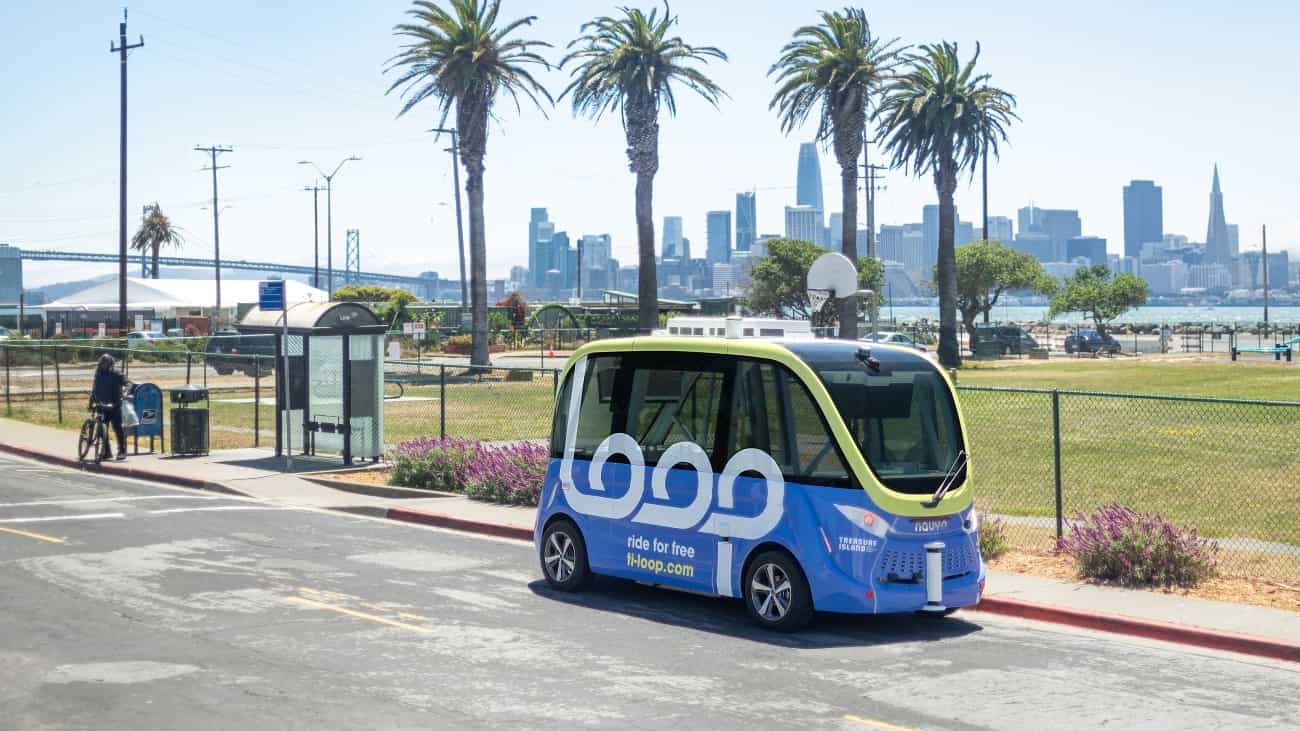
Operation of automated vehicles poses new challenges to road network design. Vehicles are designed for ideal road conditions. Yet these are not available throughout Austria. A virtual traffic simulation should help identify and evaluate the most problematic routes.
Automated vehicles will drastically change the future of mobility. The Austrian government expects, among other things, heightened road safety, improved traffic efficiency and a reduction in energy consumption and emissions. Nevertheless, combined usage can be expected at first. Autonomous vehicles and traditional road users will share road networks.
Automated vehicle requirements
Before automated vehicles become operational, road infrastructure needs to be adapted. Smooth operation of vehicles depends on guidance systems, clear ground markers, clearly legible traffic signs and unrestricted visual connections. Austrian road infrastructure covers one hundred and ninety thousand kilometers; a comprehensive adaptation would be costly.
A research team from the Austrian Institute of Technology (AIT) in Vienna have explored the question of what infrastructure automated vehicles need in order to be able to travel safely and efficiently on Austria’s roads. The project, called Via Autonom, focused on non-urban roads, i.e. motorways, highways and open country roads.
Identification of vulnerabilities
The project aimed to identify weak points in road infrastructure. Central to the research were issues on safe and efficient combined usage and improvement of autonomous driving functions. Autonomous driving capabilities are actions such as lane planning, anticipatory driving style, pre-crash support and expanding the electronic horizon.
Finally, it was necessary to identify road sections where measures had to be taken so as to avoid risks in terms of road safety, traffic flow and driving comfort.
Risk modelling method
A method of risk modelling was developed in order to identify critical sites and sections of the road network. The focus was on linking sections, construction sites, unclear curves, etcetera. Building on this, analyses were carried out using traffic simulation methods. What has been analyzed:
- the effectiveness of a predefined portfolio of measures;
- the availability and quality of various data sources in terms of road safety and traffic flow;
“We used two demanding standard traffic scenarios in the virtual traffic simulation to examine what state-of-the-art vehicle sensors can do at the moment,” explains Philippe Nitsche, AIT project manager at AUTONOM.
Virtual traffic simulation
These are the tasks that the automated vehicle had to perform:
- turn left at a secondary T intersection;
- drive over a two hundred meter long acceleration runway into highway traffic.
The virtual traffic simulation was based on the assumption that the vehicle would be driven in accordance with road traffic regulations. Nevertheless, the automated vehicle could not satisfactorily handle both test situations. The results were sobering:
- Only fifty-two percent of the eight hundred simulations on the short acceleration lane were successful;
- When turning left at the T intersection, just forty percent of six hundred simulations were successful.
Improving infrastructure measures
Infrastructure measures which were implemented during the traffic simulation significantly improved the performance of automated vehicles. For example, the acceleration lane was extended and a cross-over assistant was installed at the T intersection.
Traffic simulation as a basis for making decisions
The study demonstrated the quality of virtual traffic simulation. The procedure is suitable for quantitative evaluation of infrastructure measures and their impact on safety and traffic flow. The tests are reliable and can be used as a basis for investment decisions.
Dynamic route planning
Navigation of automated vehicles is dependent on dynamic data. Dynamic data means real-time information about situations such as snowy roads or construction sites. If autonomous driving is no longer possible, controls are handed back to the driver or an emergency stop is initiated. The limitations are defined in the Operational Design Domain of the car. A prerequisite, however, is the permanent availability of information about current road conditions. Provision of this data requires cooperation between public authorities and commercial data providers.
The results of the project were:
- a set of recommendations on infrastructure measures for autonomous road transport;
- an identification method for critical sections within the Austrian road network;
- an architectural concept for the efficient use of traffic, vehicle and infrastructure data along with digital maps;
Project partner:
The project was carried out in cooperation with business enterprises. The partners were IT service provider Prisma Solutions, traffic planners Rosinak & Partner, Virtual Vehicle R&D Centre and Wieser Verkehrssicherheit GmbH.
Also of interest:
Autonomous Driving: Solutions for road traffic of the future
On your own in the asphalt jungle
Pegasus – Mit dem Wunderpferd zum autonomen Fahren
Blickfeld: Deutsches Start-up entwickelt serientaugliche Schlüsseltechnologie für autonomes Fahren
Autonomes Fahren: Mit PATHFINDER auf den richtigen
WegErster automatisierter Lkw-Konvoi auf öffentlicher Straße







